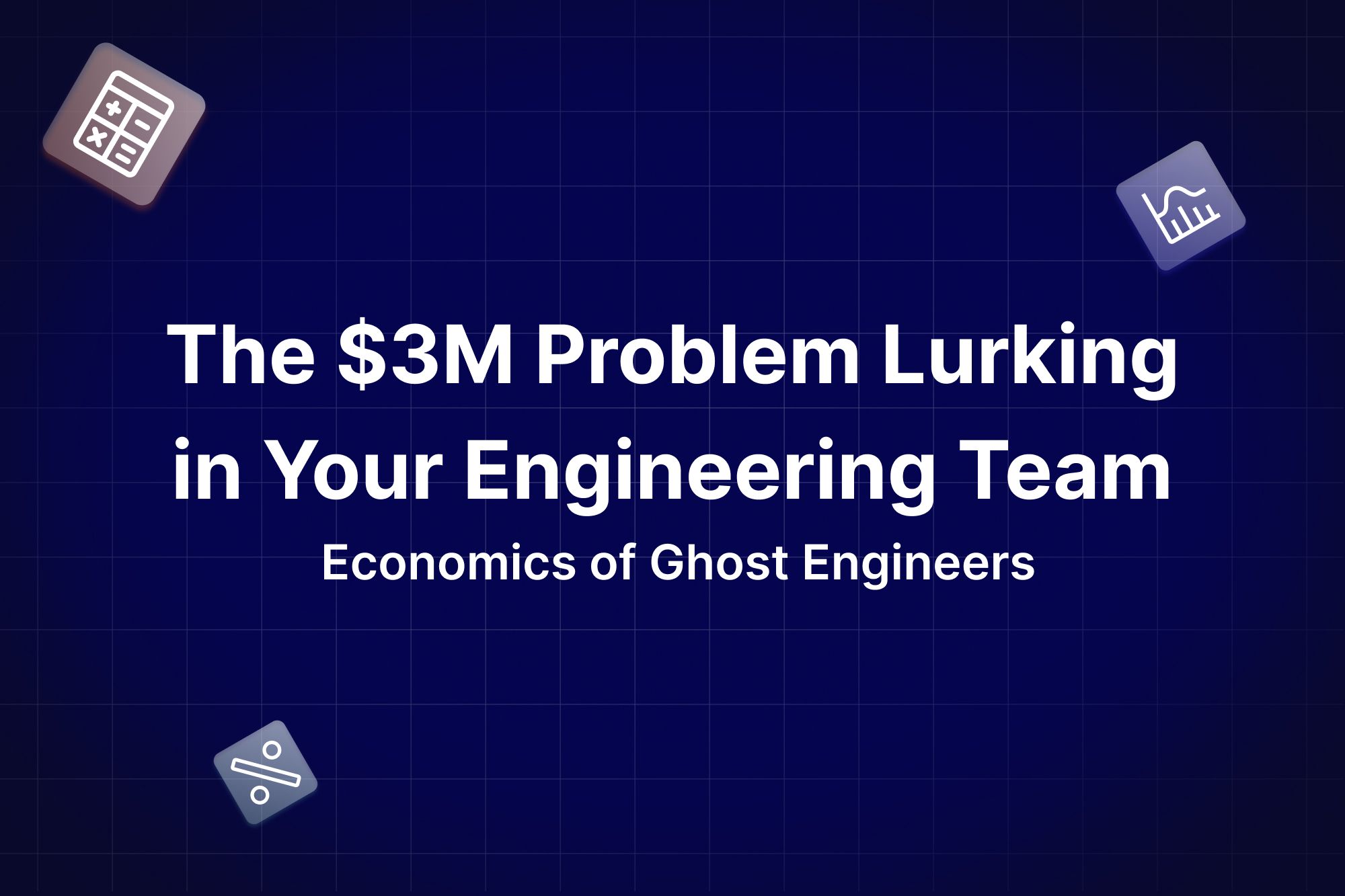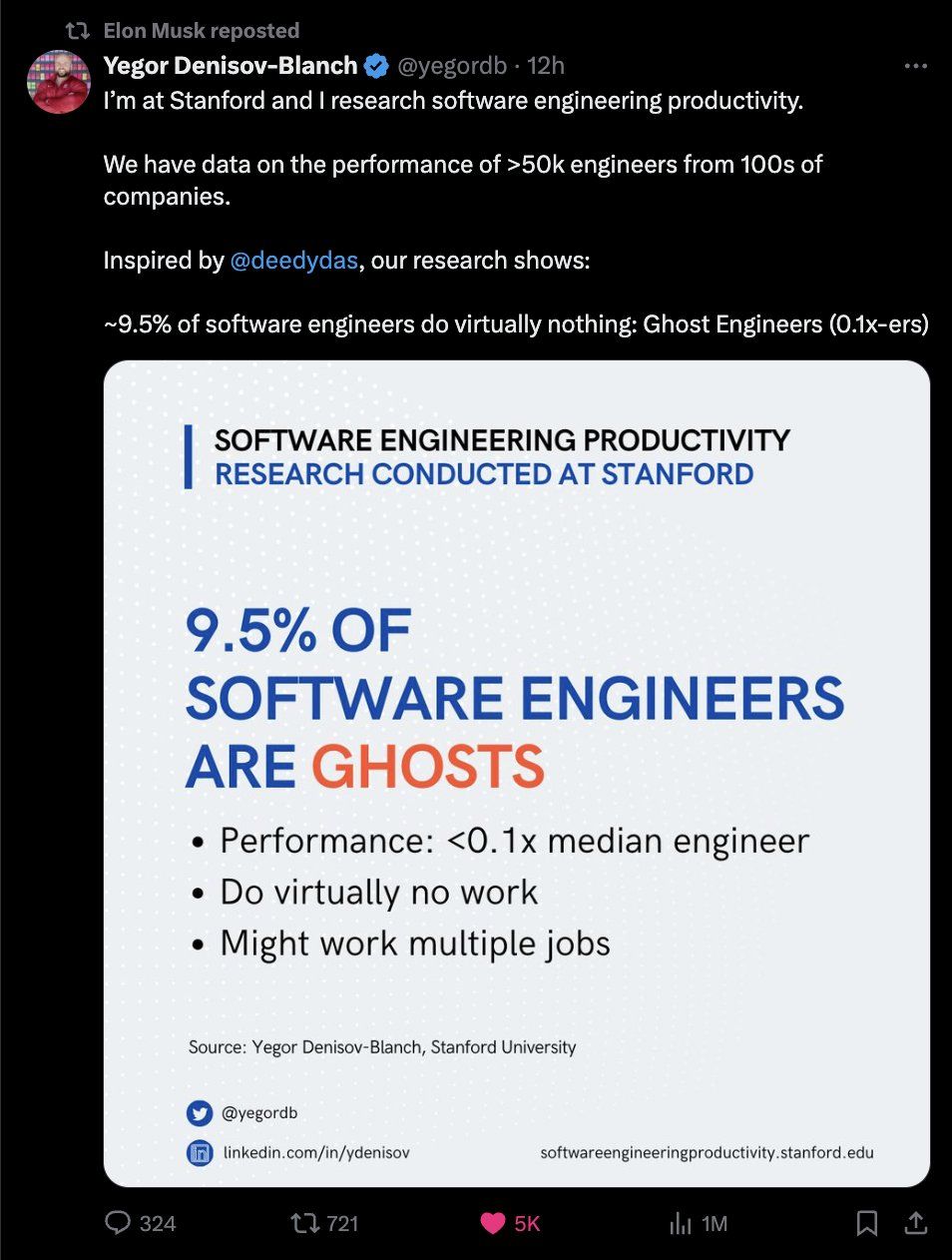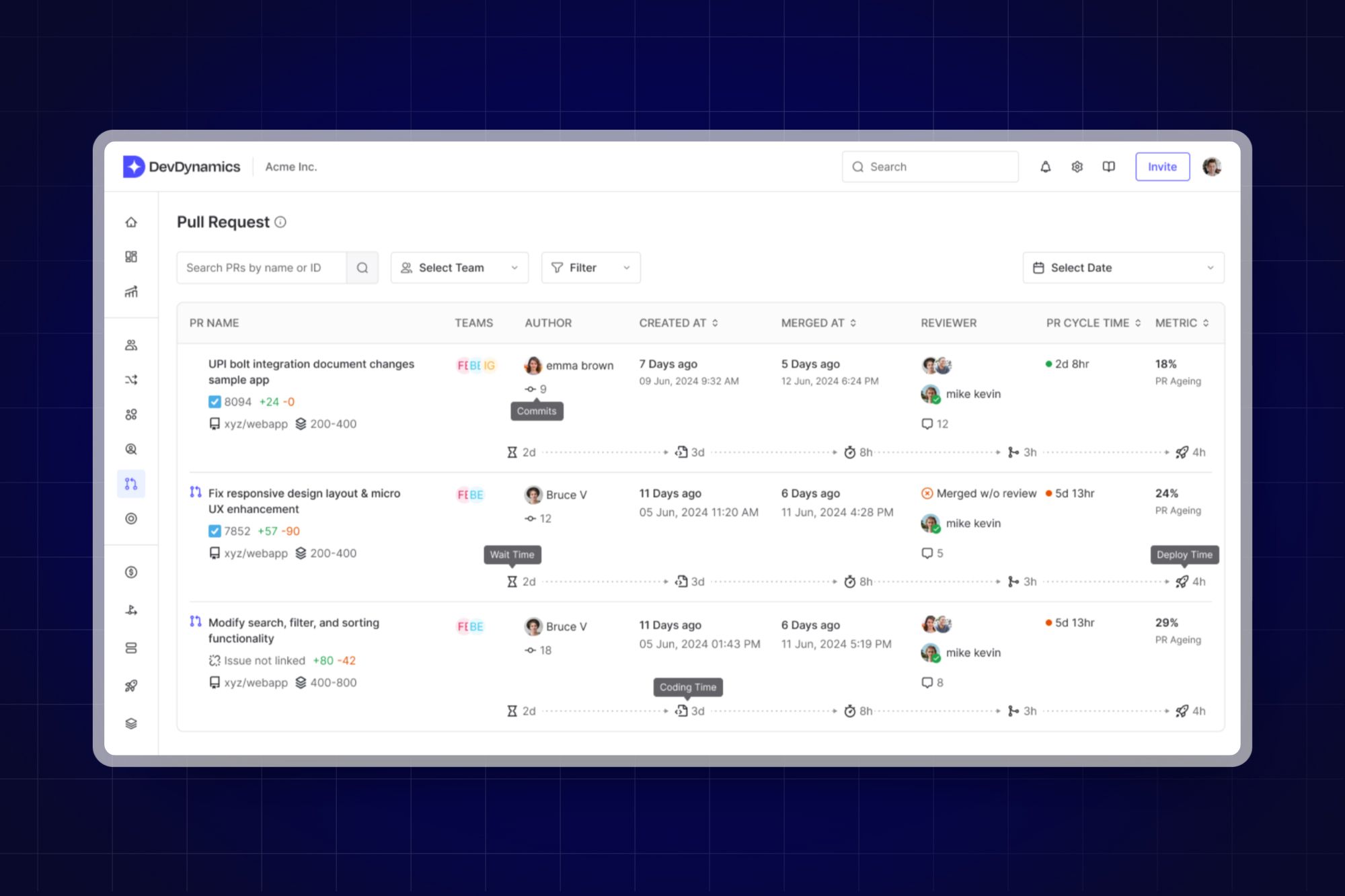The Economic Impact of Ghost Engineers

Stanford didn’t just throw a pebble into the pond; they dropped a bomb with their study on “ghost engineers.” These aren’t the mysterious geniuses fixing code at midnight. Nope, they’re the engineers clocking in, showing up for meetings, and doing… not much else.

Here’s the stat that hit like a gut punch: 9.5% of engineers in big companies aren’t really contributing. Remote work gets blamed a lot, but it’s not the full story. Ghost engineers aren’t just a remote thing, they’re a “this is draining your company dry” kind of problem. It’s not just about their paychecks. The real damage is in the missed deadlines, the pissed-off clients, and the teams getting fried while they pick up the slack.
Where Ghost Engineers Bleed You Dry
Straight-Up Costs
This is the stuff you can see right on your books.
- Salaries and benefits: Ghost engineers still get paid like your star players. Bonuses, health insurance, 401(k) all of it. But their actual work? Barely worth a mention.
- Tools and gear: They’re using the same expensive tools as everyone else licenses for Jira, GitHub, and SonarCloud, not to mention $2,000 laptops and cloud storage. These tools aren’t cheap, and every ghost engineer soaking them up is just money burned.
Let’s put some numbers on this. The average software engineer at a mid-sized company makes around $150,000 a year, including benefits. If 9.5% of a 100-person team are ghosts, that’s 9 to 10 people costing you $1.5 million a year. Add $50,000 to $70,000 more for wasted tools and licenses, and you’re already hemorrhaging money.
Lost Time = Lost Money
This is where it starts to hurt.
- Missed deadlines: When 10% of your team isn’t pulling their weight, projects slow down. Deadlines slip. And those delays? They cost you. If a project that could bring in $2 million annually gets delayed by two months, you’ve just kissed $333,000 goodbye.
- Missed potential: Every ghost engineer sitting idle is a wasted opportunity. You’re paying $150,000 a year for someone who’s giving you maybe 10% of what they should. Multiply that across 10 ghost engineers, and you’re looking at $1.35 million in wasted potential.
The Costs You Don’t See Right Away
These are the costs that creep up and punch you when you’re not looking.
- Technical debt: When your top engineers cover for the ghosts, they rush. Bugs sneak into the code, documentation becomes a mess, and your codebase turns into a house of cards. Fixing this later costs big bucks. If just three projects rack up $15,000 a month in technical debt because of rushed work, that’s $540,000 a year gone.
- Rework: Sloppy work has to be cleaned up. Redoing tasks costs time and money. On average, rework can eat up 20% to 30% of a project’s budget. For a $1 million project, that’s $200,000 to $300,000 in extra costs.
When the Dominoes Start Falling
This is where it goes from bad to worse.
Your top performers won’t stick around if they’re constantly cleaning up someone else’s mess. When they leave, you lose their experience and leadership, and hiring replacements isn’t cheap. Replacing just two senior engineers earning $150,000 a year could set you back $600,000.
The Total Damage
Let’s add it all up for a 100-engineer team:
- Salaries and wasted tools: $1.57 million
- Lost revenue from delays: $333,000
- Technical debt and rework: $840,000
- Turnover and replacement costs: $600,000
Total yearly cost: $3.34 million.
And that doesn’t even account for the intangible losses, like team morale, trust, and creativity, that are impossible to price but devastating to your business.
How Do You Stop the Bleeding?

You don’t fix ghost engineers by pretending they don’t exist. Here’s how you get your team back on track:
- Face the problem head-on. Ghost engineers are draining your team and your money.
- Find out why they’ve checked out. Are they burned out? In the wrong role? Missing the skills they need? Have one-on-ones, ask the hard questions, and figure out the root cause.
- Bring in the right tools. SEIP and Engineering Management tools like DevDynamics can help you track who’s contributing and who isn’t. We show you the data you need to make informed decisions before it’s too late.
- Take action. Offer training or mentorship if there’s potential for improvement. Realign roles if necessary. But if someone just doesn’t want to step up, let them go. It’s better for the team and the business.
The Real Problem Isn’t Ghost Engineers
The real problem is letting ghost engineers stay. Every day you wait, you’re losing money, time, and trust. But it doesn’t have to be this way. The sooner you take action, the sooner you stop the bleeding.
Fixing ghost engineers isn’t just about cutting costs. It’s about protecting your team, your reputation, and your bottom line. The good news? You can start fixing it today.
Want to know how DevDynamics can help you get visibility into your developer's contributions?
Book a demo now

